Early February 2018, and my passport arrived with it’s visa for Nepal. Now it was real, I was going.
Two weeks later, I found myself in a Doha airport lounge, surrounded by Nepalese men returning home with large TVs as luggage. There was one other Brit, a woman with wavy hair, stout boots and laughter lines of life experience. She was, it turned out, on the same expedition as me. We’d both signed up for a trip to the Langtang Valley as part of a leaders expedition with World Challenge Expeditions. Sue was an old hand with WCE so I was in good company.
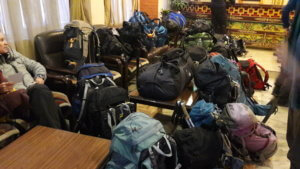
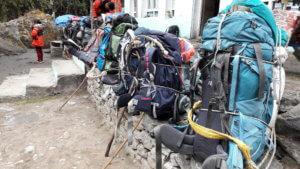
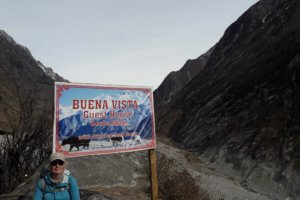
Two days later, others arrived at my hotel in ones and twos. Once the full compliment was there (around 15 plus 2 leaders), we were introduced to our head Sherpa and his 3 deputies. Porters would be hired at the start of the trek, a village called Syabrubesi. But to get there, a mere 40 miles, took a nerve-wracking bus journey up and down dirt roads. Definitely not recommended in the monsoon season.
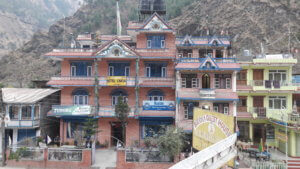
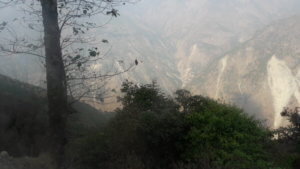
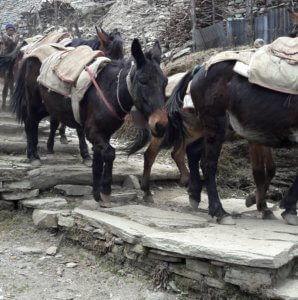
An evening meal, some repacking, introductions to the Porters, and we set off the following morning. We’d gone only a short distance before stopping to risk assess a swing bridge. This was to be a pattern repeated over the 5 days; lots of stopping to discuss what we’d do, and would recommend, to young people in our care. It turns out that, as with most things in life, there’s more than one way of crossing to minimize risk. To each their own, then.
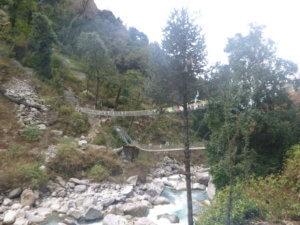
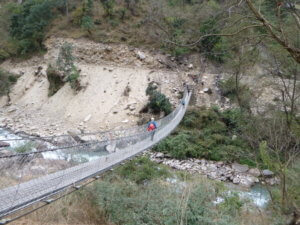
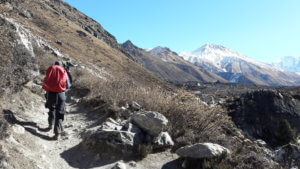
There was a well-worn trail most of the way. We were initially in a river valley, following it for 3 days and climbing steadily. The gushing waters were a shade of glacier green/blue. Despite being February it was hot, thirsty work. The path was interspersed with hamlets, usually a couple of houses, which offered lunch to hungry passers-by. Due to the terrain, the only land on which to grow vegetables was a small plot next to the house.
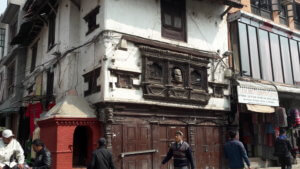
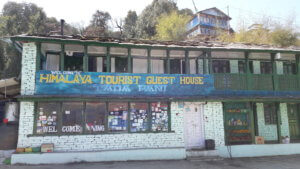
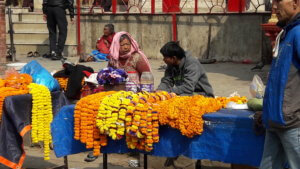
A highlight was seeing large hanging bee-hives, clinging to rockfaces across the river. Collecting the honey was for lithe, agile locals. Evenings were spent eating, talking and keeping warm in the main room of the guesthouse.
By the third day, our narrow gorge had widened to a valley floor. At last, we were getting somewhere. Yaks appeared, along with shrines and prayer-wheels. Towards the end of our last day’s walk-in, we had to cross a boulder field. This was over a mass grave, where villagers had met their fate under a huge landslip in the earthquake of 2015. The old Langtang village had disappeared. The survivors were rebuilding, further up the valley.
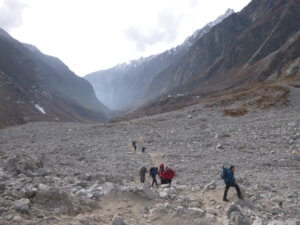
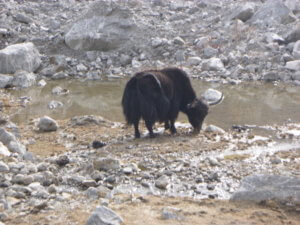
That night, in new Langtang, was our coldest. The following morning, we’d head up the hill that was the object of our trip; Kianjin Ri. The scenery all around was impressive. We were, after all, in a corrie surrounded by 7000 metre peaks. Our objective was a mere pimple in comparison. None-the-less, I got a real sense of achievement for being on it’s summit (ok, ok, so there’s a long, gentle slope that leads away and up to another of it’s tops) but the views round about were jaw-dropping.
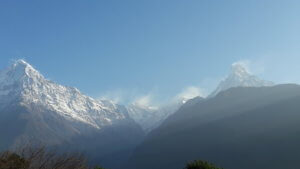
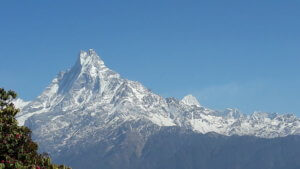
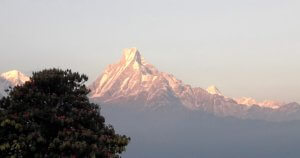
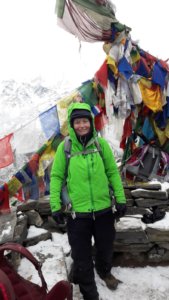
It’s the scale of it all that gets you. Back down for dinner, then a 2-day walk out in very warm weather.
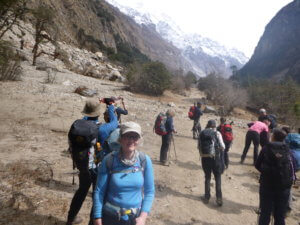
The return 9 hour journey to Kathmandu gave us great views. A session on ‘urban awareness’ followed by a debrief the next day, and were free to go. I, though, had other plans.
Before leaving home, I’d booked a trip to Annapurna Base Camp with a trekking company in Kathmandu, ( thanks Kenny & Rona ). So it was that 3 days later I was on a bus heading for Nepal’s second city, Pokhara, with my guide, Pancha. He had very little kit and was in trainers. I had my trekking rucksack, complete with super-toasty-but-heavy sleeping bag. I thought he was underequipped. I found that, of course, it was me who was over-equipped. At 8am the following morning, we left the city for our start point; a gap in a hedge by the looks of it. There was a built path though. And by god, that was just the start. It was nearly steps all the way. On our first evening I had two pleasant surprises: Pancha appeared in what I took to be a pair of his wife’s purple, heeled plastic slip-on sandals, more than a size too small. He was observing the custom of ‘no boots’ in the main room, so had come equipped. The second was my first view of Annapurna itself, in the distance with a pale pink sky for accompaniment.

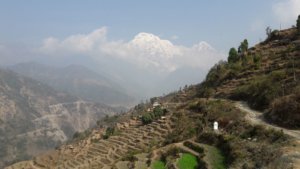
The following two days were spent moving up through terraced fields, to join the main track up to Base Camp. There had been reports of bad weather and the helicopter activity was increasing. By the third day, I’d had enough of the steps. This was meant to be the ‘holiday’ part of the trip, after all. So I asked Pancha about alternatives. He said that turning back and finding another objective was a good idea, as his fellow-guides had been telling him that the snow was thick further up. I wondered at what point he would’ve shared this information, whilst realising that as the paying client, his job was to take me to my destination; not to offer alternatives even if the weather was bad.
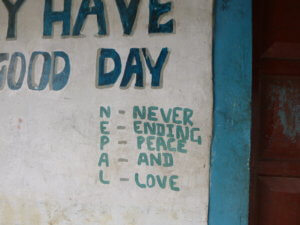
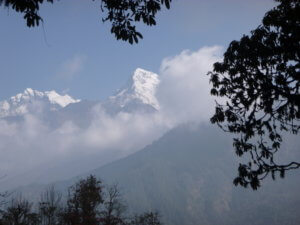
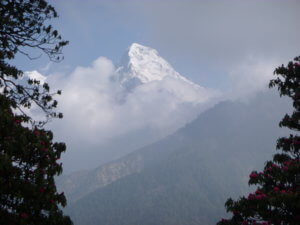
Alternative agreed, we headed west towards Ghorepani and Poon Hill, a favourite tourist spot. Terraced fields gave way to lush foliage then, after several days, to hillsides of rhododendron. The villages changed too, from wood to those of dry-stone buildings. The weather was cold but dry and sunny. A night in Ghorepani with a walk before dawn to see the sunrise from Poon Hill was worth it. The views of Machhapuchhre (Fishtail), Annapurna, and Dhaulagiri in the distance were magical. We rested that day then began our return to the road. This involved descending so many stone steps that I was thankful we were coming down, not going up. The day after that we returned to Pokhara and on to Kathmandu.
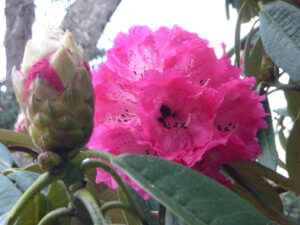
I found being in the mountains quite overwhelming, because I’d read about them for so long that to actually be there was such a joy. They’re famous, after all, and I felt like I was in the company of superstars.

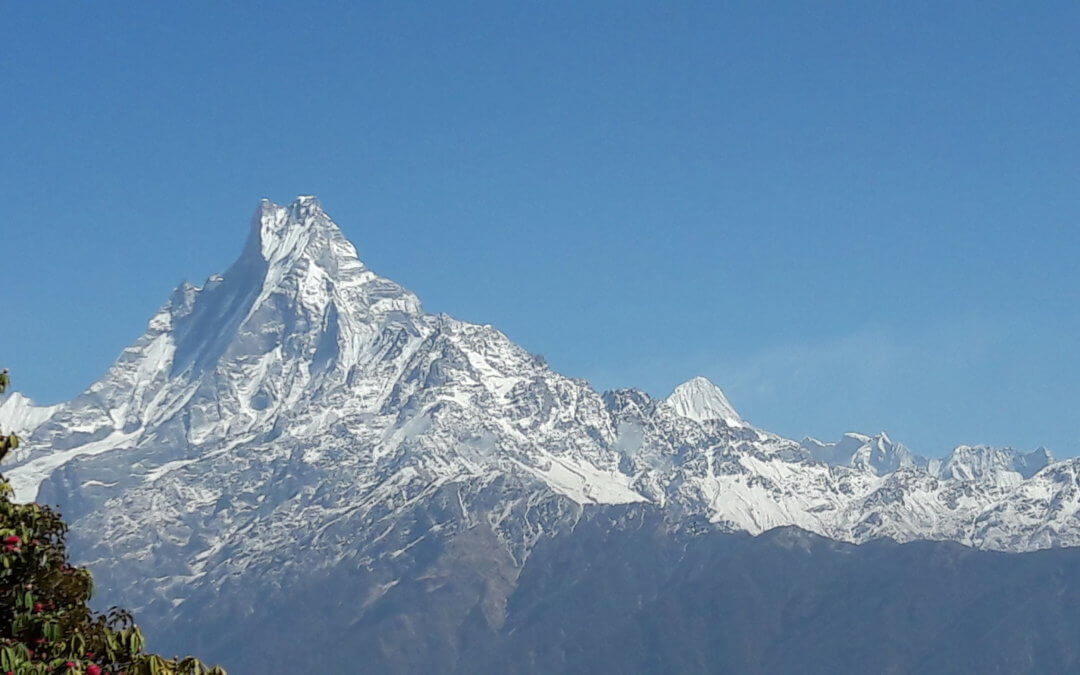


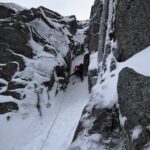
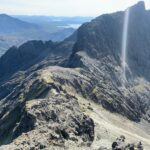

Great photos, Gill
What an experience!
Superb trip Gill. Maybe one day I will manage to follow.